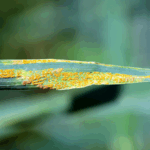Breakthrough Could Protect Global Food Supplies 🌍
Imagine if scientists could ‘delete’ a plant’s vulnerability to disease like editing a text message? That’s exactly what a team in the Chinese mainland just did—using gene editing to boost wheat’s defense against stripe rust, a fungal disease so destructive it’s called wheat ‘cancer.’ 🦠 Their 18-year quest, led by Prof. Wang Xiaojie, has unlocked a game-changer for agriculture.
The Gene Behind the Cure 🧬
Researchers identified a gene, TaPsIPK1, that makes wheat susceptible to stripe rust. By tweaking it with CRISPR-like tech (yes, the same tool used for designer crops 🧪), they created wheat plants that went from ‘highly vulnerable’ to ‘resilient superheroes’—without sacrificing yield! Field trials showed the edited wheat kept its original growth traits, making it farm-ready. Results were published in the journal Cell in 2022.
What’s Next? A Triple Threat Shield 🛡️
The team now aims to engineer wheat resistant to three major diseases: stripe rust, powdery mildew, and gibberellic disease. Prof. Wang calls this a leap toward ‘green agriculture’—key for feeding a growing population amid climate challenges. 🌱 With 780 million tons of wheat produced globally yearly, this tech could be a lifeline for food security.
Reference(s):
Chinese researchers use gene editing to combat wheat 'cancer'
cgtn.com




